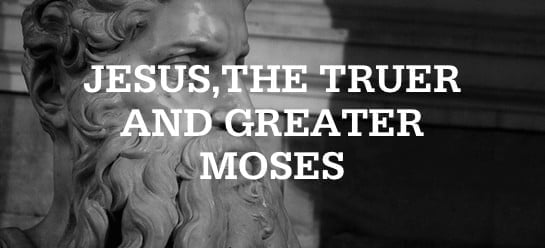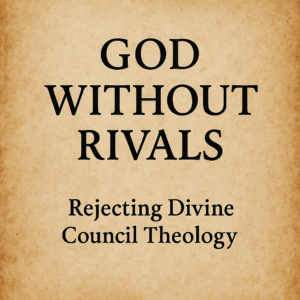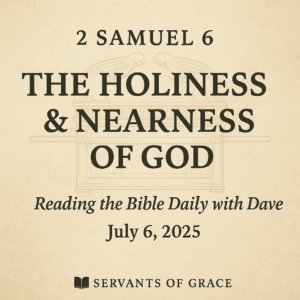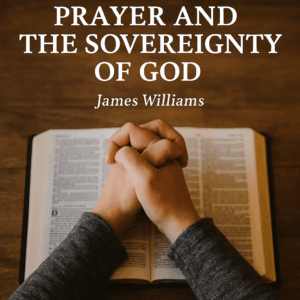⏱️ Estimated Reading Time: 5 min read
In this article, we introduce a new blog series called Jesus, the Truer and Greater Moses.
Some people treat the Old Testament and New Testament as the Bible before Jesus and the Bible after Jesus, respectively. But to say this is to miss the point of the whole Book. The Old Testament is much more than just the “before Jesus” stuff. It’s more than just the story of Israel’s history. It’s the story of God preserving the seed of Christ which would come from Adam and Eve, on through Abraham, on through David, and would continue passing along until the proper time (or “fullness of time”) that Jesus would finally come to walk the ground He created (Gal. 4:4). It all points to Him. Thus, both the Old and New Testaments are about Jesus—the Old Testament is about the Messiah who is promised to come and the New Testament tells of the Messiah who has already come.
The whole Bible points to Jesus.
German Bible scholar Gerhard Von Rad says it this way: “The same God who revealed Himself in Christ has also left his footprints in the history of the Old Testament covenant people.” So, the whole Bible is about Jesus. Yes, even “the law and the prophets” are about Jesus. After all, Jesus Himself made that claim:
“Do not think that I have come to abolish the Law or the Prophets; I have not come to abolish them but to fulfill them. For truly, I say to you, until heaven and earth pass away, not an iota, not a dot, will pass from the Law until all is accomplished.”
(Mat. 5:17-18)
So the whole Old Testament—every jot, dot, and tittle—is about Christ. Do you see it? That is our hope for this blog series: that you will see that and stand in awe at God’s sovereign purposes as we look at Christ through one Old Testament example: the life of Moses. See, God’s amazing plan was always about Jesus. Jesus wasn’t the Father’s plan B. He was plan A all along. The Story and the Law have always been pointing to Him.
What does this have to do with Moses?
Moses. Who is he? In this blog series, we’re going to pick away and examine who Moses was, what was the role he played, and what did his ministry look like. And when we examine his life, we will see a picture of Jesus. Or to put it another way: Moses will be the lens through which we’ll look at Christ.
Moses is a type of Christ.
Moses is a type of Christ. We could also say he is a shadow of Christ. But what does that mean?
Basically, a “shadow” or “type” is a picture of a greater reality that is yet to come. It is something or someone intended by God to prefigure Jesus and give His people a taste so that will anticipate and appreciate what God is going to do through Jesus Christ. Think about the tasting samples they pass out at Costco or food courts. Everybody loves those! Sure, those samples are free and typically delicious, but they alone will never satisfy your hunger. As scrumptious as they might be, they don’t even come close to feasting on the actual meal! That’s what Moses is to Jesus. Moses is the taster to wet your appetite. Jesus is the feast that satisfies.
Jesus is truer and greater than Moses.
If you were to ask an ancient Jew who their spiritual hero was, they might say the same thing: Moses. For them, he was the hero of the Old Testament. The author of Hebrews says, “Moses was faithful in all God’s house” (Heb. 3:5). He was also Israel’s greatest prophet. Even still, because we now have the New Testament and the testimony of Jesus, we know that Moses, great as he was, was just a shadow pointing forward to Christ.
Consider the author of Hebrews:
“Therefore, holy brothers, you who share in a heavenly calling, consider Jesus, the apostle and high priest of our confession, who was faithful to him who appointed him, just as Moses also was faithful in all God’s house. For Jesus has been counted worthy of more glory than Moses—as much more glory as the builder of a house has more honor than the house itself. (For every house is built by someone, but the builder of all things is God.) Now Moses was faithful in all God’s house as a servant, to testify to the things that were to be spoken later, but Christ is faithful over God’s house as a son. And we are his house if indeed we hold fast our confidence and our boasting in our hope.”
(Heb. 3:1-6)
So we see that Moses prefigures Christ. Jesus is the one who is truer and greater Moses—the one who is “worthy of more glory than Moses.”
To understand what this means, we should consider: Who was Moses? Or, more specifically, what were the roles he played? Throughout this series, we will look at five different roles Moses fulfilled: prophet, law giver, mediator, deliverer, and servant. An in depth study of each of these will help us further understand what we mean when we say that “Jesus is the truer and greater Moses.”




